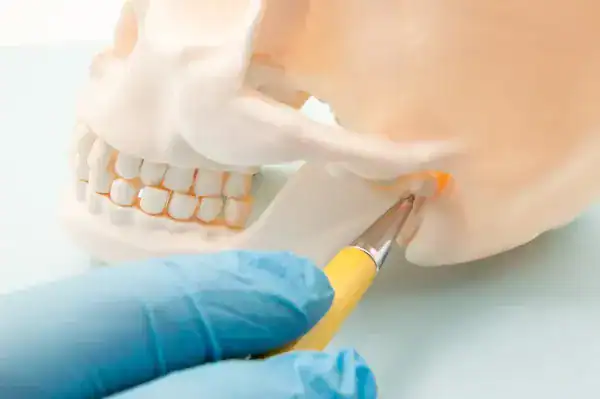Chemodenervation for Temporomandibular Joint Pain

Temporomandibular joint pain (TMJ) is a thorn in the side (or rather, the jaw) for many. It’s more than just a nuisance – it can negatively affect your quality of life. For years, the medical world has grappled with treatments, seeking innovative ways to alleviate this often-debilitating pain. Enter chemodenervation for temporomandibular joint pain, an emerging and promising method. This detailed guide aims to shed light on this therapy, its benefits, how it’s administered, and its role in mitigating TMJ pain.
Understanding TMJ
Before delving into the specifics of chemodenervation, it’s crucial to understand the beast we’re fighting – TMJ. Characterized by pain in the jaw joint and muscles that control jaw movement, TMJ can be a real jaw clencher. Symptoms often include jaw pain, difficulty chewing, and a clicking sound or grating sensation when opening the mouth or chewing. But why let TMJ hold the reins of your life when there’s a potential solution?
The Genesis of Chemodenervation
Chemodenervation is a medical treatment involving the use of chemicals to interrupt nerve impulses, thus reducing muscle activity. In the context of TMJ, this procedure can alleviate pain by decreasing the hyperactivity of the muscles involved. The introduction of this technique in treating TMJ is a classic example of medical innovation at its finest.
Ever wondered what happens during a chemodenervation procedure for TMJ? Hold onto your hats, folks, we’re about to take a deep dive into the process!
The Initial Evaluation
First and foremost, an initial evaluation is performed. Your doctor will conduct a thorough assessment to ascertain whether chemodenervation is the right fit for you. This may include checking your medical history, physical examination, and sometimes imaging tests.
The Procedure Itself
During chemodenervation, a chemical agent is injected into specific muscles, blocking the nerves’ signals. The endgame? To reduce the pain and discomfort caused by muscle hyperactivity. This process is carried out by a trained professional who knows the nitty-gritty of facial anatomy and nerve distributions.
Post-procedure Care
Following the procedure, patients are provided with detailed aftercare instructions. While chemodenervation is minimally invasive, it’s important to follow the prescribed post-procedure care to ensure a smooth recovery.
We’ve heard the “what” and “how” of chemodenervation for TMJ, but what about the “why”? What benefits does this treatment bring to the table?
Pain Relief
Undoubtedly, the primary benefit is pain relief. By reducing muscle activity, chemodenervation can effectively alleviate TMJ pain, providing relief that’s often elusive with other treatment methods.
Improved Function
Secondly, chemodenervation can improve the jaw’s function. With decreased muscle hyperactivity, the jaw can move more freely, making everyday tasks like eating and talking easier.
Minimal Side Effects
Unlike some treatments that come with a laundry list of potential side effects, chemodenervation is generally well-tolerated. It’s a procedure that packs a punch without throwing you in the ring!
While chemodenervation is an effective treatment for TMJ, it’s not without challenges and considerations. It’s not a magic bullet, and it’s important to be informed about these aspects before diving in headfirst.
Limited Duration of Effectiveness
One of the challenges of chemodenervation for TMJ is that its effects are not permanent. The relief experienced is temporary, and the procedure may need to be repeated after a certain period.
Potential for Overuse
As with any treatment, there’s a potential for overuse. If not appropriately administered, chemodenervation could lead to over-relaxation of the muscles, affecting the jaw’s function.
Cost and Accessibility
Chemodenervation can be an expensive treatment option, and access may be limited depending on geographical location and healthcare coverage. A consultation with Performance Pain and Sports Medicine will help determine if your insurance allows coverage.
FAQs
Is chemodenervation for TMJ painful?
Generally, the procedure is minimally invasive and is not associated with significant pain. However, some discomfort may be experienced during the injection, which is usually well-tolerated by patients.
How long does the effect of chemodenervation for TMJ last?
The duration of effectiveness varies among patients but typically lasts for several months. Your doctor can provide a more personalized timeline.
Are there any risks associated with chemodenervation for TMJ?
While generally considered safe, there can be potential risks such as injection site reactions and, rarely, allergic reactions. It’s important to discuss these potential risks with your healthcare provider.
Can anyone with TMJ undergo chemodenervation?
Not everyone with TMJ is a suitable candidate for chemodenervation. Your doctor will evaluate your condition and determine if this treatment option is right for you.
How long does the procedure take?
Chemodenervation is typically a quick procedure, often completed in less than a half an hour.
Can chemodenervation cure TMJ?
Chemodenervation is a treatment option that can provide significant relief from TMJ pain, but it is not a cure for the condition.
Conclusion
TMJ is a pain in the jaw, both literally and figuratively. Yet, with advancements in medical science, relief is within reach. Chemodenervation for temporomandibular joint pain is an effective, minimally invasive treatment option that offers the potential for significant relief. As with any medical procedure, it’s essential to understand the process, benefits, and potential challenges, and make an informed decision under your physicians guidance. Call Performance Pain and Sports Medicine today, 346-217-1111 to determine if this is the right treatment for you.
